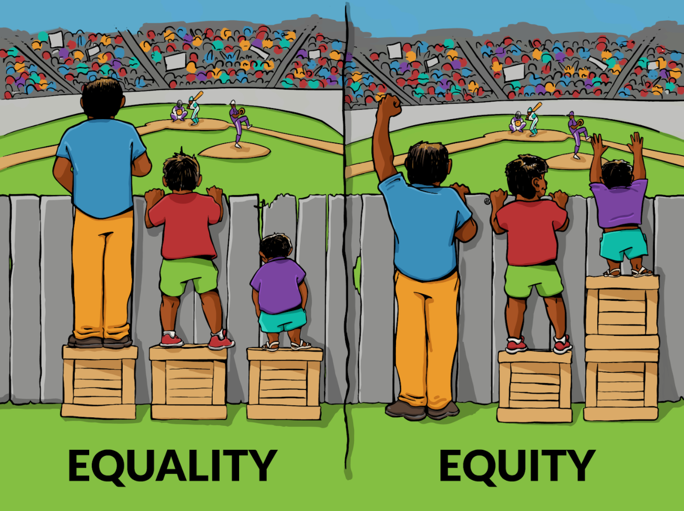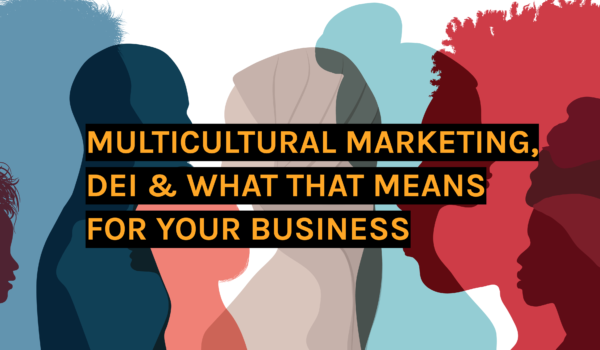The melting pot is a metaphor often used to describe American culture. In recent history, that phrase is being used less because it implies assimilation and a loss of individual identity. A better phrase to use might be salad bowl—- an integration of different cultures while still allowing people to maintain their individual cultural identity. Call it what you want, the goal remains the same — crafting messages and images that reflect the audience you’re trying to reach.

Image Source: Pexels.com
How do I know if my multicultural advertising strategy is right?
The first step in your advertising strategy is to not lose sight of the underlying principles of multicultural marketing: diversity, equity and inclusion. (DEI). The metaphor of a dance can be used to illustrate these principles:
Diversity is where everyone is invited to the party.
Equity means that everyone gets to contribute to the playlist.
Inclusion is when everyone has the opportunity to dance.
These principles are typically used to build a progressive corporate culture, not the marketing it does, per se. But they are the first steps in gaining the research and insights needed to shape a marketing strategy that authentically communicates your commitment to using them as pillars of growth.
How can diversity, equity and inclusion be seen in a marketing strategy?
Diversity: Everyone is invited to the party
Showing diversity in your marketing messages is something of a first step. You know that you would like everyone to patronize your business. But would someone know that if they don’t see themselves reflected in your messaging?
You can start by just taking a tour of your own website. Are the images somewhat homogeneous? Could you change some or add to them?
In addition to the messaging, the medium is important as well. Are you advertising on platforms that reach a multicultural audience? For instance, Latino audiences are much more active on mobile than other groups, and Black consumers are 40% more likely to respond to mobile ads than any other group. Having the right mix of mediums is just as, if not more, powerful than simply adding targeting segments to your digital advertising.
Equity: Everyone can contribute to the playlist
Equity is sometimes conflated with equality, but there is a distinct difference. While opportunities seem to be open to all, some people face barriers that others don’t. There is a very popular illustration to demonstrate this:

Image Source: Interactioninstitute.org
As you canYou’ll see, that while all three people have the opportunity to watch the game, not all cancould take part until equitable resources are given.
So how might this apply to your business? Again, let’s start with your website. One thing often overlooked is whether it’s optimized for people with disabilities, like vision impairment. The ADA has a complete guidebook for creating websites for compliance. Another thing you can consider is translating your website into other languages. For example, nearly 30 million Spanish-speaking people in the U.S. report they also speak English “well” or “very well.”. So while they may be able to read and understand your site, it may make those people feel more welcome and included to beif they were able to read it in their native language. Tribune Publishing offers Spanish translation services for our advertising partners and has extensive experience reaching Hispanic communities in our markets.
Inclusion: eEveryone has the opportunity to dance
For your company to display inclusion, it all comes down to outcomes. In other words, are different groups reaping the benefits of the goods and services you offer? Testimonials, reviews and success stories are integral to showing this. Whether you’re an educational institution highlighting graduation rates of minority groups or a healthcare provider touting patient success for conditions more often affecting those same minority groups, it’s important to have those people represented in the messaging surrounding favorable outcomes.
There are many tactics available for businesses to advertise their customer reviews and success stories —- primarily in the form of branded content. It allows you to tell a longer story and educate readers more thoroughly than most traditional advertising mediums.
Now that you understand DEI as pillars of a multicultural marketing strategy, it’s time to apply them to the tactics you’re using to reach and, more importantly, convert a diverse audience. And there’s really no time like the present. The Mmulticultural population continues to increase and is expected to be the numeric majority by 2040. Black and Latino people alone account for nearly $3 trillion in spending power in the U.S. —- that’s not a number any business can afford to ignore.
Sources: Hispanic Online Marketing; Inside Radio; Campaign Monitor

